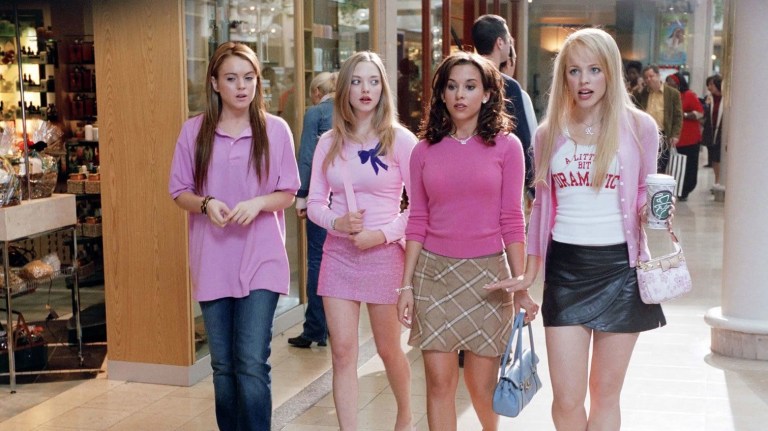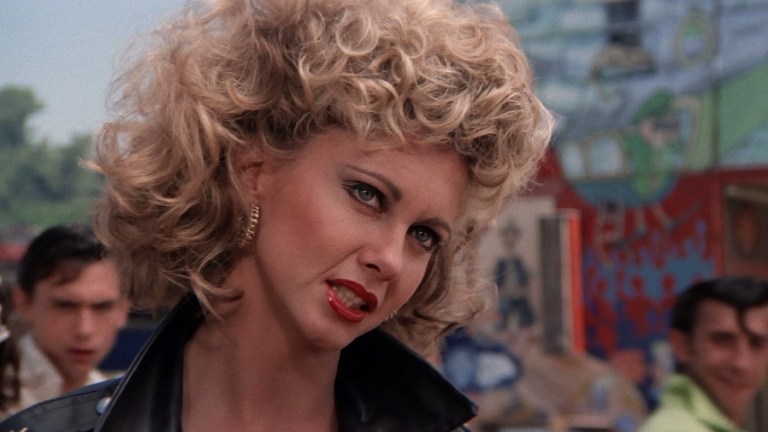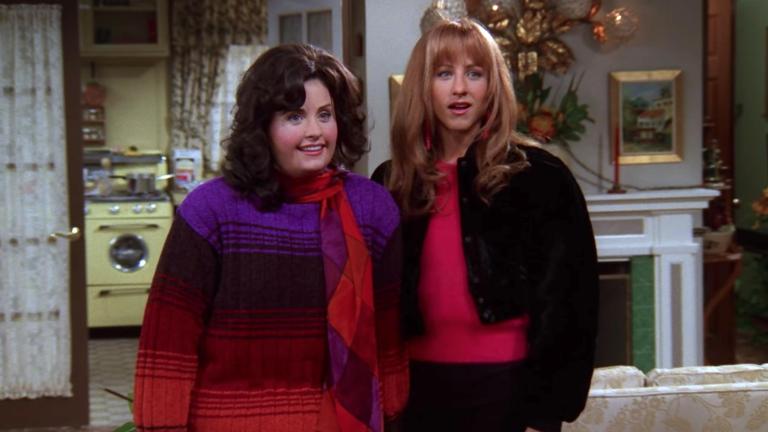
This Is What Body Positivity Really Means, Because It’s Not Just Promoting ‘Fatness’ Or Removing Health From The Equation
The thinly veiled argument that to accept all bodies or even idolize atypical ones is to disregard "healthfulness" actually has no basis in reality.
Body positivity is a movement that advocates for the social acceptability of diverse body types, as well as media representation of those who aren’t exclusively white, cis, able-bodied or most predominantly, thin.
The core tenet of the movement is that “all bodies are good bodies,” and should be treated as such. Despite this, the movement has attracted a wide array of criticisms over the past few years.
The roots of the modern body positivity movement can be traced back to the early 2000s, with marketing campaigns like the Dove Campaign For Real Beauty, or its follow up, a time-lapsed video showing a model being Photoshopped. After a decade of seeing lithe models slapped across every billboard and ad campaign, it was, for the first time, something revolutionary: a line of “regular” women in their underwear. But this time, they were also on posters, on commercials, in magazines. At long last, there was proof that the photos in ads were adjusted and distorted, implying that trying to look like them was a lost cause. Whereas now people just assume that the photos they see are filtered and edited, back then, perfection was akin to normalcy.
So it was, for the lack of a better word, a complete breakthrough.
But it wasn’t for at least another decade until “body positivity” reached its tipping point and entered the mainstream. Fueled largely by second-wave feminism principles of gender, body, and sexuality, people began to realize that society coached and policed them into trying to attain beauty standards that they would simply never be able to live up to. Not only should they aspire to them, though, they should invest in them: diets, makeup, whatever made one more traditionally attractive was not only worthwhile, it was invaluable. In that was what kept billion-dollar industries intact: you could never be as perfect as the women you were brainwashed to consider normal. It was physically impossible. But you’d keep spending as much as you had to in order to try to get there. The media machine didn’t create body hate. It just exploited it.
The ongoing pressure for women to achieve an unattainable degree of “thinness,” people began to realize, was always a warped and learned belief. This is traceable back to gender dynamics that only changed as of recent decades: before women could live autonomously, their livelihood depended on being “chosen” by a husband. The quality of their lives literally depended on being “beautiful.” That was their currency, and that was their security. Realizing that this was so motivating to women, product advertisements began capitalizing on it in the same way they often do sexuality, family or love – publishing unrealistic images and selling the idea that having another product would make you happier, smarter, more successful, but most of all: more beautiful, and what “beautiful” really means, which is wanted.
Media seemed to be perpetuating, or perhaps really reflecting, an unspoken social principle: thinness, at any cost, was akin to godliness and should be sought at any cost.
In the years since companies have begun realizing that creating content that people want to share is a radical way to advertise. As Amanda Mull argued, that’s part of what made the movement a sham. It was not really fueled by women who were tired of hating themselves, and more so inspired by companies who discovered another way to exploit their deepest insecurities.
Not that women like that don’t exist: they do. In fact, you could find any number of them on your Instagram explore page right now. Their empowerment is not a façade, either. At the core of every woman is likely nothing more than just the desire to finally accept themselves as they are.
But many argue that body positivity has made that harder. With the onslaught of those empowered, incredible women being unapologetically authentic with their bodies came the shame of wanting to be thin, and the inherent contradiction that was beauty as a whole. While some argue that doing what one desire with one’s body is considered to be under the umbrella of acceptable self-expression, New York Times writer Kelly deVos explained that when her teenage daughter had to hide the fact that she wanted to lose weight from her, she knew the body positivity movement was to blame.
These are the principles of the body positive movement:
– All bodies are “good” bodies. There is no inherent moral ascription to the size, shape or color of a body.
– Diverse and marginalized bodies should be represented as an honest and meaningful reflection of how people really look.
– It is wrong to judge, shame, ridicule or punish people based on their body.
Though this seems like it is a wholly good thing (and in principle, it really is) the many criticisms that surround the movement reflect its flaws. First, some argue that the “plus-size” women that were being touted as diverse and radical were actually just slightly larger than the abnormally small model, but still traditionally beautiful by most people’s standards. Some felt that as it was so strongly tied to media and advertising, body positivity’s monetary undercurrent was too strong to make it authentic. As Stephanie Yeboah said: “Body positivity today is monetized and politicised by brands and public figures, in ways that often result in individuals above a certain size being left out of the conversation.” Some felt it actually resulted in many suppressing the will or want to be “thin,” or feeling more ashamed for hating how they looked. In a worse scenario, it perhaps even vilified thinness.
But by far, the most common criticism of the movement is that accepting diverse bodies inadvertently promotes being “fat,” or “unhealthy.” The idea that fatness = sickness has been drilled into our brains for years, and yet it is an over-generalized assumption that’s been disproven time and time again. But the belief that those who are against the movement seem to have is that representing exclusively thin, healthy bodies in the media will make people thinner, and healthier.
Historically, the opposite has happened.
In the decades leading up to the body positivity movement, strictly seeing white, cis, able, thin bodies not only as solely acceptable, but everywhere in the media didn’t make people thinner, whiter, or more able-bodied. In fact, those decades were, perhaps relatedly, immediately followed by an eating disorder epidemic, the highest obesity rates the U.S. has ever seen, and a mental health crisis on top of it all.
In the same way that promoting images of ideally beautiful people does not motivate others to also be more healthy and fit, accepting and representing diverse bodies does not make people more inclined to just toss in the towel and, heaven forbid, just accept themselves the way that they are. The logic here is backwards, and indicative of why self-hate is such a huge problem for people in the first place: it’s assumed that hating yourself is the only way to change yourself; and changing yourself is the only way to guarantee that you’ll be loved, liked, or even accepted.
For those who dare to defy that and declare themselves loved as they are, they are pointing out something raw and dark in the minds and hearts of people who would much prefer to keep the status quo in its oppressive place: If I am not beautiful, if I do not have society’s standard by which to abide, what is it then that makes me worthy? What is it that will guarantee I am loved?
The thinly veiled argument that to accept all bodies or even idolize atypical ones is to disregard “healthfulness” actually has no basis in reality. If health were people’s actual concern, they’d also police their friends about drinking too much, or being too stressed.
It is an oddly sad fact, but people don’t really care all that much for other people’s health and wellbeing. Not most people, anyway. And certainly not those who would assume that shaming them is an appropriate tactic for maintaining their “health.”
If only people felt as strongly about healthcare as they did fatness. If only they spoke up as much about public policy as they did fatness. If only they rallied against bullying the way they do fat bodies. If only they believed being judgmental was as bad as being fat. If only they worked as hard at being empathetic as they did at being thin. If only their goal was to make others feel seen as much as it was to make them feel envy.
Whether or not the day in which that kind of self-awareness will arise is yet to be seen.
But in the meantime, what really matters is what exists at the core of body positivity: the unparalleled importance of accepting and loving others unconditionally.
Even if a body was unhealthy, even if a body was ugly, even if a body needed to be changed in some way, hating, judging, shaming and guilting that individual would not help. It would only decrease their will or at the very minimum, their quality of life. In fact, stress and self-hate are two of the biggest detriments to health, and some surveys show that a staggering 97% of people “will be cruel” to their bodies on any given day.
The idea that people don’t want diverse or marginalized bodies shown proudly online or in the media because they are afraid of glorifying what’s believed to be unhealthy is a load of bullshit because if it were, we’d protest McDonald’s ads and smoking bars. The resistance to seeing different body types and sizes is not the problem itself, it is shedding light on the unconscious narrative that has been running through most people’s heads for the majority of their lives. It is not disapproval for this new era of self-acceptance, it is the fear that has existed all along, but now, it is being brought to the light.
If it’s true that hurt people hurt people, it’s also true that insecure people shame people. And that’s exactly what’s happening when people cite their discomfort and dislike for showing any bodies that aren’t ideal anywhere but in the privacy of their own homes. These sentiments aren’t coming from people who are empowered and self-confident. They’re coming from those people whose own self-defeating mindsets are being challenged by those who will no longer ascribe to them. It feels invalidating, and so, they resist it. Self-hate, they assume, is what’s holding them together, keeping them motivated, and beyond all else, pushing them to stay ideally attractive.
The body positivity movement is not about picking and choosing which bodies are good, and which are bad. It is not about glorifying one and condemning another. It is not about implying that real womanhood looks any specific way, or that the desire to change your appearance is due to being mentally weak and insecure. It is not about advocating for self-acceptance above healthfulness or rational thinking.
The body positivity movement is just the reminder that we need to be kind to ourselves, and then we need to extend that kindness out toward every body we see and know and meet.
What matters most is accepting people for where they are at, regardless of whether it is “healthy,” (a fact of which nobody but an individual and their doctor will know anyway) regardless of whether or not it is ideal, and regardless of whether or not it is beautiful. If people were genuinely concerned with “health,” we’d hear about people being shamed when they go out in the sun without SPF or drink more than two glasses of wine in a night. But that doesn’t happen, because it has nothing to do with “health” and everything to do with people who are suppressing their own body insecurities projecting them onto others and policing them.
It is not about only accepting those who are healthy and beautiful. It is not about trying to decide who is healthy and beautiful. It is only remembering that everyone is imperfect, yet everyone is worthy. ![]()











